
Management of ectodermal dysplasia I— overdenture prostheses
Ectodermal dysplasia (ED) is an inherited condition in which there are two or more abnormalities of ectoder- mally derived structures. It usually affects tooth development and presents with congenitally absent teeth or teeth that are peg-shaped or cone-shaped. The enamel is often defective. Multiple denture replacements are often needed as the child grows to restore deficient skeletal and dental structures, and dental implants may be an option in adolescence. Dental treatment is complex; a multidisciplinary approach is recommended.
CASE STORY
A 17-year-old male patient with X-linked hypohidrotic ectodermal dysplasia presents for dental rehabilitation. The chief complaints are the inability to chew efficiently and poor aesthetics.
Figure 1: Preoperative maxilla.
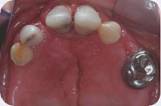
Figure 2: Preoperative mandible.

Figure 3: Preoperative presentation.
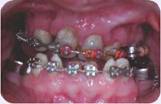
Figure 4: Preoperative mounted diagnostic casts at the vertical dimension.
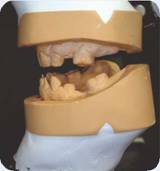
LEARNING GOALS AND OBJECTIVES
- Identify facial and dental manifestations of ectodermal dysplasia (ED).
- Understand the factors considered in prosthetic rehabilitation of patients with ED.
Medical History
- Hypohidrotic ectodermal dysplasia
Dental History
- Previous dental treatments involved orthodontic treatments in efforts to align the remaining dentitions in more favorable positions for potential future prostheses.
- Difficulties with proper oral hygiene maintenance along with poorly contoured restorations resulted in further deterioration of periodontal tissues around the existing dentition.
Radiographic Findings
- Insufficient bone volume in posterior maxilla and mandible
- Periapical pathology on maxillary left canine (11)
- Periapical pathology on maxillary right central incisor (8)
Clinical Findings/Problem List
- Loss of vertical dimension of occlusion
- Poor oral hygiene
- Recurrent caries
- Defective restorations
- Reduced masticatory function
- Retained deciduous teeth
- Congenitally missing permanent teeth
- Erythematous/edematous gingival tissues
- Skeletal class III malocclusion
Diagnosis
- Ectodermal dysplasia
- Loss of vertical dimension of occlusion
- Chronic periradicular periodontitis
- Localized severe periodontitis
- Generalized moderate periodontitis
- Overcontoured/defective restorations
- Retained deciduous teeth
- Congenitally absent permanent teeth
- Caries
- Class III malocclusion
Figure 5: Panoramic radiograph.
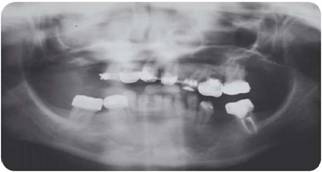
Figure 6: Periapical radiographs.
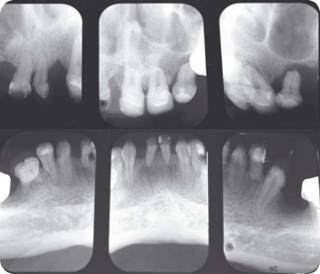
Clinical Decision- Making Determining Factors
- Ectodermal dysplasia (ED) is characterized by approximately 150 genetic disorders of aplasia or dysplasia of at least two different tissues of ectodermal origin, such as onchyodysplasia (affecting nails), hypotrichosis, (affecting hair), hypodontia (affecting teeth), or hypohidrosis (affecting sweat glands) (Kere, Srivastava et al. 1996).
- The use of dental implants/>
Stay updated, free dental videos. Join our Telegram channel

VIDEdental - Online dental courses


